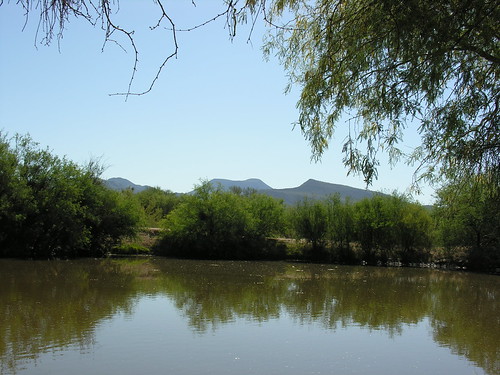Travel in the Desert
Posted in Travel | By Shelley Gillespie | Tags: Desert, Southwest
Even though I live in the desert in Southern Arizona, not many of us actually get to be “one with nature.” A guide, who often leads groups on off-road excursions, offered to take me on a four-wheel drive adventure so I could see more of the desert.
Before heading out in the early morning, we filled his Jeep with gas – “there are no gas stations in the desert, no sense taking chances” – and had brought along a CB radio, GPS tracking, cell phone and other technology to back us up. A sign on one of the early tracks offered many cautions, but my guide was experienced, so I trusted his many preparations.

As we bumped along over the rough, unpaved track, I was glad the Jeep was 4-wheel drive. At times, we traversed deep washes with a 45-degree slope, areas that had recently washed out from a heavy rain, and a section that the government had covered with stone, making it even more uneven.

We finally reached the South Vekol Well, where I was surprised to see a lake, surrounded by trees. A lake in the middle of the desert? A lizard showed himself, posing for us in a shady spot. A hawk circled the lake lazily, then swooped looking for its next meal.

Nearby, remnants of the old cowboy life evoked a rough and rustic existence with a small, stone shower stall – “shower” etched in the stone – and a dilapidated bunkhouse with some electrical outlets. The area was likely powered by generators, since we hadn’t seen an electrical line since we got off I8.
Moving along on the uneven trail after spending time exploring the lake, we saw the vast expanse of the desert with the saguaro “forest” blooming and not one vehicle in view. Imagine driving for hours before seeing a vehicle!

Although people think of the desert as desolate, there is a lot of life growing and blooming. Furry, cuddly-looking cholla cacti were not at all cuddly. Ocotillos were blooming with tall stalks covered in green, ending in pink. The green-trunked palo verde signaled a bit of shade. A hardy tree that can live up to 1,500 years, ironwood added some additional color with its pinkish-purple flowers. And, the most pervasive plant in the desert, creosote bushes, dotted the landscape. According to my guide, creosote are probably the hardiest plants in the desert and, even mowed down, they can regrow within a couple of years. They are so efficient at absorbing water that nearby plants can’t seem to grow.
Black rocks, spewed by volcanoes millennia ago, litter some of the desert floor. In some areas, except for the cacti, the lava rocks almost make it seem like a moonscape.
When we landed at the Table Top Trailhead, picnic tables and a rest facility (non-flushing) greeted us. There was no shade, but one car was parked, with no one around. The noisiest thing around was a fly buzzing as we ate a snack.
I was told that if we started hiking the Table Top Trail (it was late morning), we wouldn’t be back until dark. We weren’t prepared for that, so we enjoyed nature and took photos. Table Top Trail, according to some material in a trailhead cabinet provided by the Bureau of Land Management, is 4.5 miles long and rises from 2,100 feet of elevation to 4,356 feet at the mountain’s peak. There are no amenities – no water and no trash containers, so “pack it in and pack it out” is the rule of the trail.
After our long morning in the desert, we headed back. Another vehicle approached, with two gentlemen in a pick up truck heading out for sightseeing. Further along, near the last mile or two of our off-road journey, an abandoned bicycle with a flat tire was perched under a tree, evidence of someone’s efforts to slip in from Mexico. Continuing, we saw a Border Patrol officer sitting quietly in his truck near the beginning of the trail, scanning the landscape. He nodded at us, but did not stop us.
When living in the density of a city, it is difficult to imagine the openness, quiet and profusion of life in the desert only a few miles away. Try it!
CAUTIONS: Take plenty of water. Avoid this trip if heavy rains are expected because the washes can flood. 4-wheel drive is a good idea and CB radios are helpful since our cell phones did not get a signal for most of the trip. GPS navigation is a plus. Vehicles are asked to stay on trails to preserve the desert flora and fauna. Let people know if you are attempting this trip, as the small number of passersby in the Vekol area means that, if you get stranded, someone might not happen along to help for many hours. More information on BLM lands is available at http://www.blm.gov/az/
